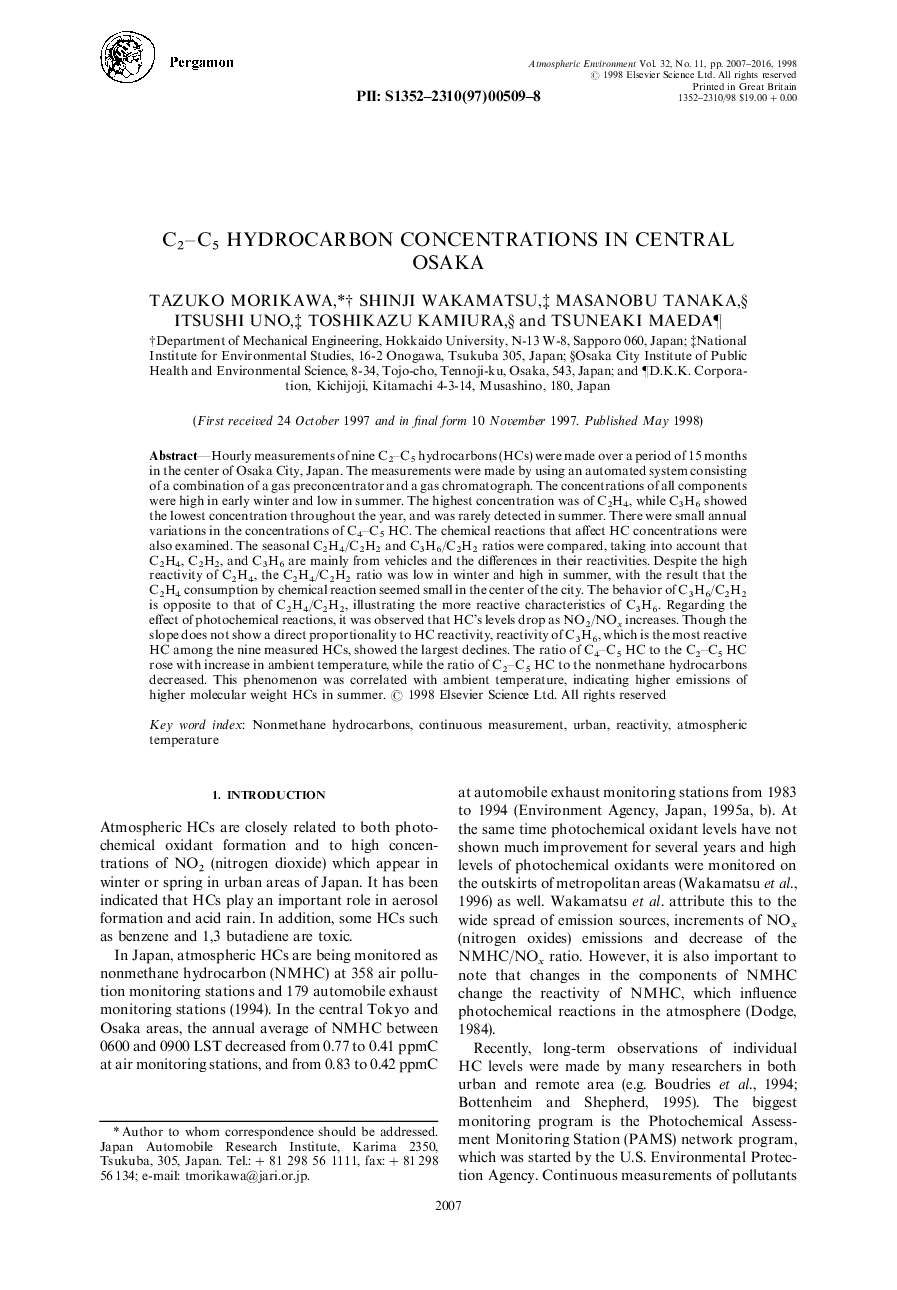| Article ID | Journal | Published Year | Pages | File Type |
|---|---|---|---|---|
| 4447784 | Atmospheric Environment | 2016 | 10 Pages |
Hourly measurements of nine C2–C5 hydrocarbons (HCs) were made over a period of 15 months in the center of Osaka City, Japan. The measurements were made by using an automated system consisting of a combination of a gas preconcentrator and a gas chromatograph. The concentrations of all components were high in early winter and low in summer. The highest concentration was of C2H4, while C3H6 showed the lowest concentration throughout the year, and was rarely detected in summer. There were small annual variations in the concentrations of C4–C5 HC. The chemical reactions that affect HC concentrations were also examined. The seasonal C2H4/C2H2 and C3H6/C2H2 ratios were compared, taking into account that C2H4, C2H2, and C3H6 are mainly from vehicles and the differences in their reactivities. Despite the high reactivity of C2H4, the C2H4/C2H2 ratio was low in winter and high in summer, with the result that the C2H4 consumption by chemical reaction seemed small in the center of the city. The behavior of C3H6/C2H2 is opposite to that of C2H4/C2H2, illustrating the more reactive characteristics of C3H6. Regarding the effect of photochemical reactions, it was observed that HC’s levels drop as NO2/NOx increases. Though the slope does not show a direct proportionality to HC reactivity, reactivity of C3H6, which is the most reactive HC among the nine measured HCs, showed the largest declines. The ratio of C4–C5 HC to the C2–C5 HC rose with increase in ambient temperature, while the ratio of C2–C5 HC to the nonmethane hydrocarbons decreased. This phenomenon was correlated with ambient temperature, indicating higher emissions of higher molecular weight HCs in summer.
